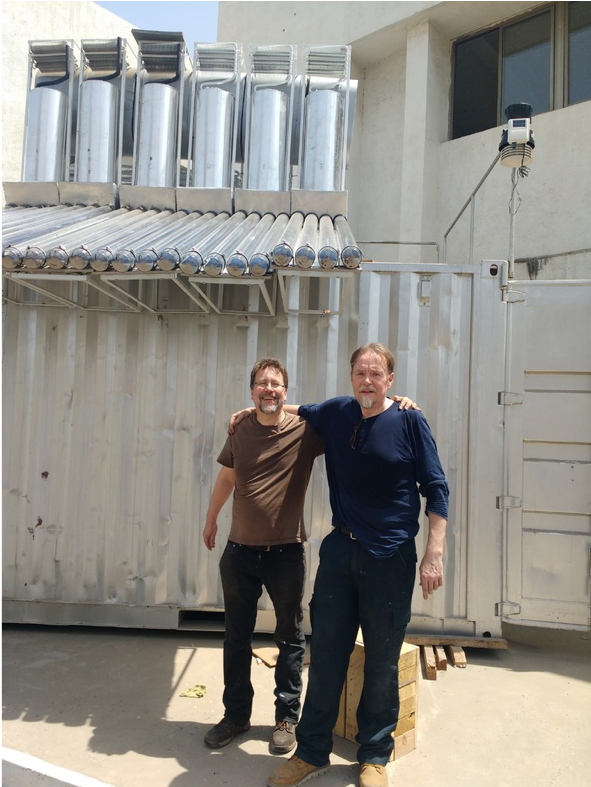Solar Cooling Engineering UG, Köngen, Germany
Solar Ice Machine using Key Components and Engineering for a better Access to Refrigeration
The team from Solar Cooling Engineering, in collaboration with the University of Hohenheim, has been carrying out research on solar cooling for the last six years. Their work has included a solar ice-maker developed for milk cooling, with 18 systems deployed in Tunisia, Kenya and Colombia. Since 2018, the company has been promoting the use of SelfChill®, solar cooling units which can be combined with locally produced refrigeration cabinets to provide flexible and lower cost refrigeration solutions in communities in developing countries.
For the Chill Challenge, Solar Cooling Engineering will use its SelfChill® solar cooling units in an icemaker capable of producing 100-120 kg of ice per day. These units use DC direct drive vapor compression technology with R-600a (isobutene) as climate friendly refrigerant. The ice-maker is powered directly by PV panels and can be optionally with electrical batteries. The provided control unit integrates a smart algorithm to command the compressors in dependence of solar energy availability. A smartphone connection over Bluetooth is included for monitoring, and the system is fully pay-as-you-go enabled. Based on its design and experience with prototypes under laboratory conditions, the team expects to achieve the Chill Challenge targets with success.
New Leaf Dynamic Technologies Private Limited, Badarpur, New Delhi, India
Ice Maker Powered by Farm Waste
New Leaf has developed, and is currently deploying its GreenCHILL refrigeration system to provide safe storage and cooling of perishable agricultural produce. The system is powered by farm-waste such as straw, cow dung cakes, biomass pellets, wood and hay, etc, and can cool up to 1,500 litres of milk or 15 metric tons of perishables goods without the need for electric grid power or diesel generator backup. The company employs more than 15 full-time employees, and has installed the system in more than 25 locations across India. New Leaf has received various awards for the system, and its investors include SocialAlpha of Tata Trusts and the India Society of AgriBusiness Professionals.
Under this grant, the company will use its GreenCHILL technology to build a 1000 kg/day ice-maker powered by biomass in the form of husk, straw, wood chips or pieces, or biogas to provide ice at levelized production cost of 0.02 USD/Kg. Its refrigeration system uses R717 (ammonia) as the refrigerant and hot water as the power source. Heat is provided by an updraft gasifier integrated with the hot water system. New Leaf estimates that the system will need about 105 kg of wood equivalent biomass per day to produce 1000 kg of ice. The system will also require about 500 w of electrical supply to run auxiliary equipment, which will be provided by solar PV with battery backup.
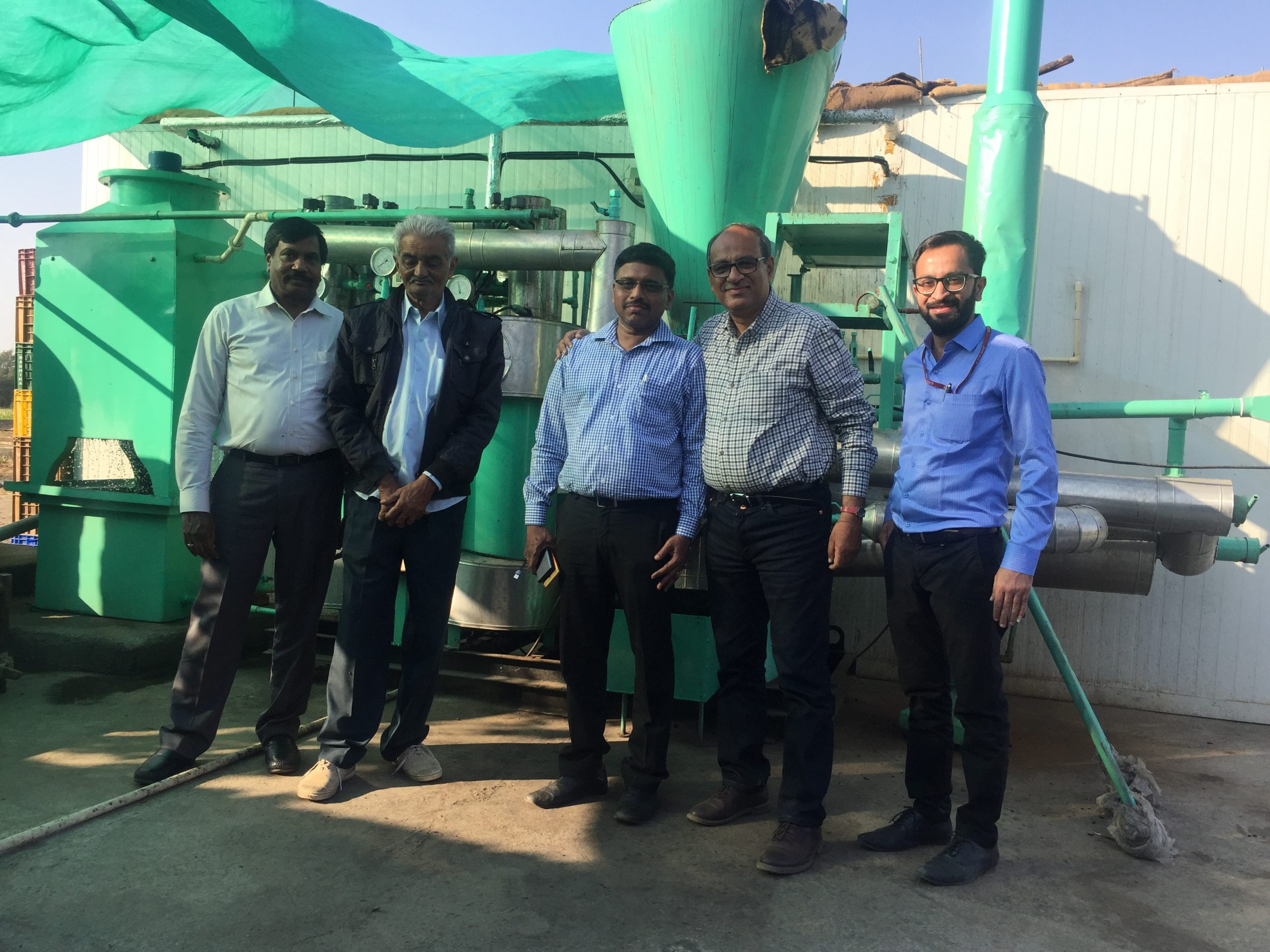
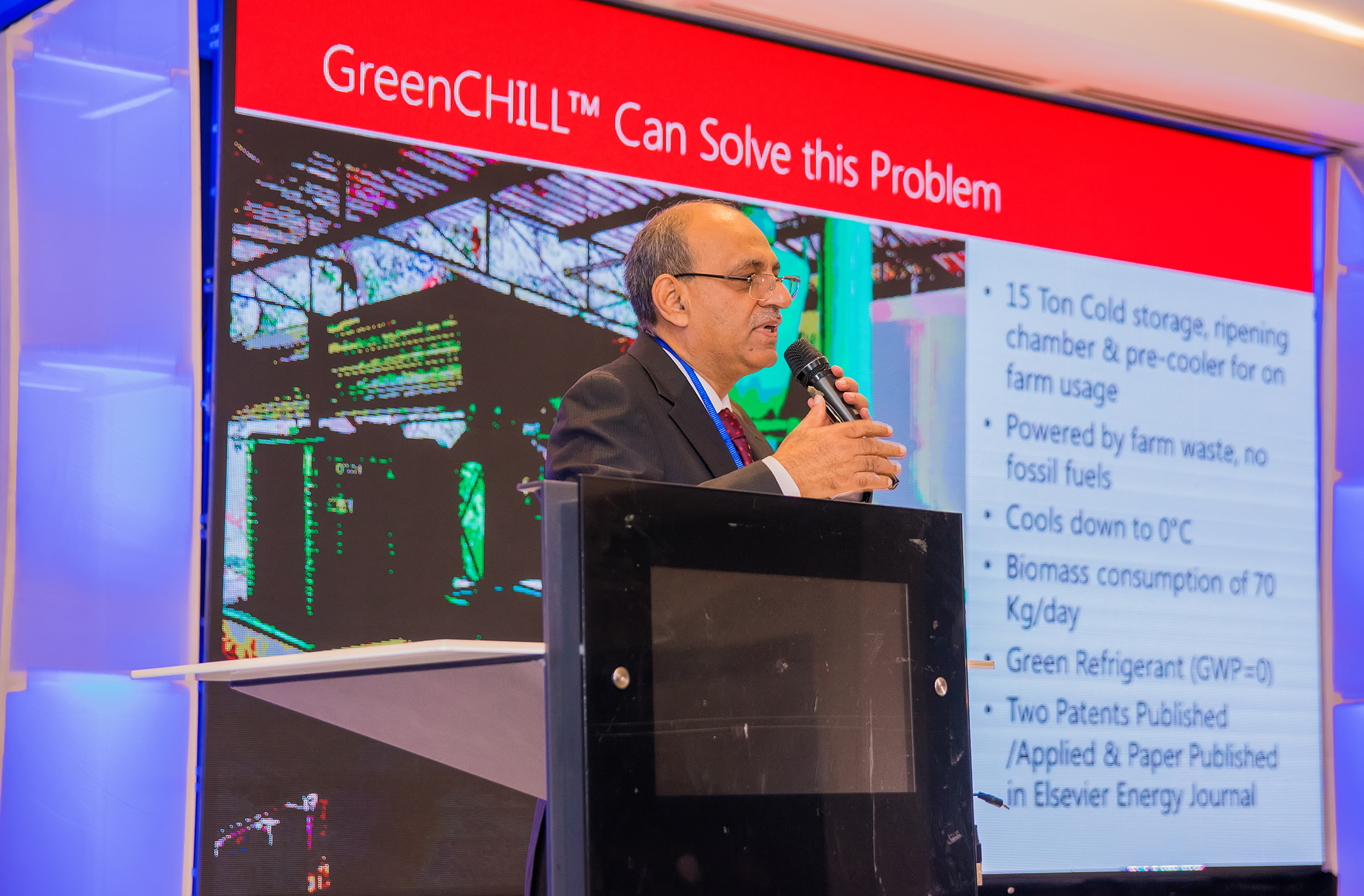
Ove Arup and Partners International Limited, London, UK
Arup’s Passive Cooling Box
Arup is a multinational engineering consulting firm, with significant prior research and development experience in passive cooling materials, phase change materials, and novel product design. The firm has investigated the use of passive cooling materials in the built environment and, in partnership with housing nonprofits, is working to scale up deployment of reflective roofs in developing countries.
Under this grant, Arup proposes to build a completely passive cooling box capable of achieving the 3°C target temperature and maintaining that temperature across several days of adverse weather conditions. The container will rely on radiative cooling materials as a cold source and phase change materials as cold storage. Radiative cooling materials are solid-state materials designed to emit heat, in the form of infrared radiation, through the “atmospheric transmission window” into space. Recent research has developed materials that are also highly reflective of sunlight, which permits them to cool themselves well below ambient temperatures, day and night, without any electricity or refrigerant required. It has been demonstrated that these materials can cool themselves substantially below 0°C when ‘parasitic’ heat flows are minimized. If successful, this research could lead to development of simple, inexpensive cooling solutions for many communities in the developing world.
Xergy, Inc., Harrington Delaware
Xergy Fridge-X: Off-the-Grid Refrigerator Utilizing Solid-State Refrigerants
Xergy, Inc. has been involved in compression & refrigeration research and development since its founding in 2009. In 2011, Xergy won the GE Ecomagination award for its work in the development of electrochemical compressors. The company has over 100 provisional, pending and issued patents, and much of its published intellectual property relates to compression, heat exchangers or heat pumps, or humidity and inerting devices. Xergy has been awarded over $9 million in grants through the US DOE, BTO Office and ARPA-E, which have helped to fund R&D in green heat pumps & heat exchangers, as well as desalination and other sustainable technologies.
To address the off-grid refrigeration challenge, Xergy will build a refrigerator utilizing an intermittent adsorption refrigeration cycle driven by solar thermal energy. The unit will use hydrogen and metal hydride as the working pair, and employ an advanced heat exchanger design, which the company believes will result in an efficiency of 70%. The system will store hot water to provide refrigeration for “dark days” without solar input. If successful, the team believes the refrigerator would provide a simple, easy to maintain solution for remote off-grid communities. Xergy has also proposed using the same refrigeration process in an icemaker.
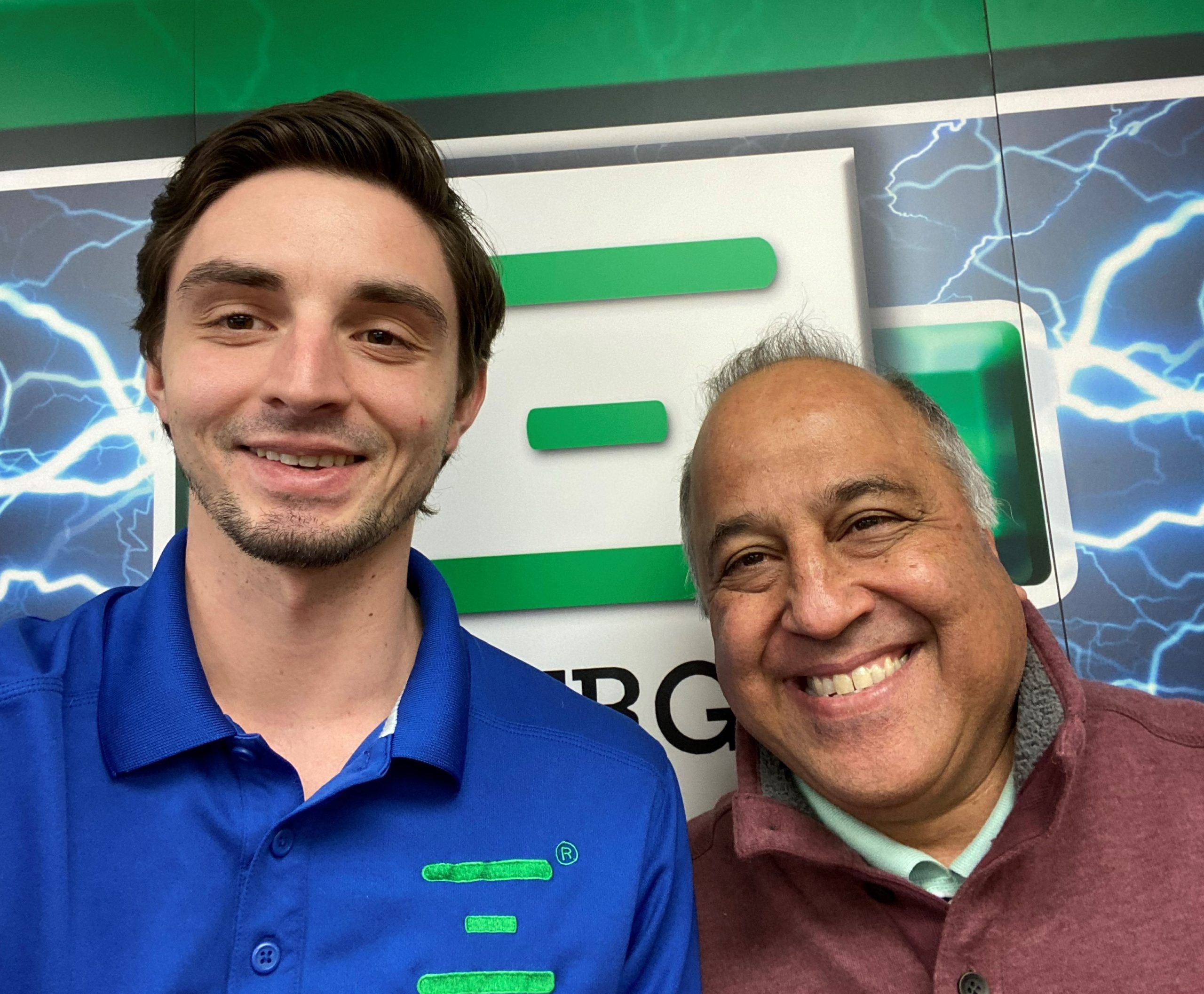
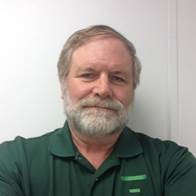
Purdue University, West Lafayette, Indiana:
Researchers at the Ray W. Herrick Laboratories at Purdue University have proposed developing and testing two innovative refrigeration technologies. The Herrick Laboratories have a wide variety of facilities for prototyping and testing new technologies, and its technical staff has a collective experience in HVAC&R of more than 50 years. In addition, researchers from Purdue have collaborated with researchers from Moi University in Kenya, a relationship which can be employed for subsequent field testing of promising technologies. The two proposals from Purdue include:
Cold Storage Battery for Domestic Refrigeration
This proposal will evaluate the use of heat from clay or brick cookstoves to drive an intermittent sorption refrigerator, which requires no electricity to operate. The sorption refrigeration device is referred to as a cold storage battery because the generated refrigerant does not need to be immediately discharged, but can instead be stored and expanded later to provide cooling on demand. The design for the cold storage battery was inspired by the Crosley icy ball. In charging mode, a heat source is used to generate refrigerant which is stored for use during discharging. In discharging mode, the refrigerant is expanded to create cooling on demand. The cold storage battery is designed to be used alongside existing wood-fired cookstoves, although other fuel sources could be used including solar thermal energy The specific working pair for the sorption refrigerator will be identified as a part of this research project.
Combined Heating and Cooling for Agricultural Applications
This research will examine the potential for of using a combined heating and cooling vapor compression system to produce ice and to dry crops. Vapor compression refrigeration systems have a high initial cost, and a combined system, which uses the evaporator capacity to create ice and the condenser heat to dry crops, may provide a way to offset that cost. The research will evaluate food drying and storage practices, including their prices and seasonality. Potential applications of the technology will then focus on locations that produce food items that command high value and/or are available throughout the year, as these will provide more benefits than seasonal food items. The team proposes to build a system that generates 100-150 kg of ice per day, using a vapor compression cycle with R290 as the refrigerant and solar PV as an energy source.
Imperial College London, Clean Energy Processes (CEP) Laboratory
Affordable Decentralized Off-grid Icemaking
The CEP Laboratory at Imperial College London and Solar Polar have been developing a thermally powered technology, referred to Diffusion Absorption Refrigeration (DAR), which can be easily integrated with low-cost solar thermal collectors or that utilize waste heat to provide cooling. The simple construction and lack of moving parts of DAR devices promise low costs and long lifetimes. Under this grant, the CEP team proposes to design and demonstrate an innovative, affordable icemaker based on DAR technology. The team will replace the ammonia-water pair typically used in DAR devices with alternative working-fluid pairs in optimized unit designs. The team expects that these innovative designs of the device and the molecular design of the new fluids will enable a cooling performance (i.e., coefficient of performance) which is almost 1.5-times higher than that of conventional ammonia-water systems. Based on this technology, the CEP team proposes to build a simple, robust and affordable icemaker using hot water from solar-thermal collectors, specifically aimed at developing, remote or off-grid communities.
